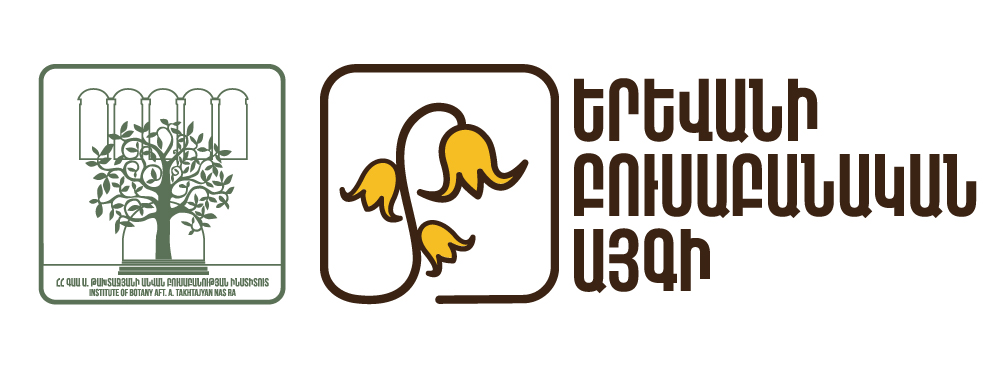Collection Land

Geographical Exposition Plots
Since 1954, the Yerevan Botanical Garden has curated a diverse collection of plant species imported from the temperate zone of the northern hemisphere. This extensive assembly adheres to the ecological-geographical principle, meticulously organized for distribution. Between 1954 and 1970, Academician V. Ghazaryan, as the director of the Institute of Botany, spearheaded the creation of geographical exposition plots in collaboration with arborists L. Makhatadze and H. Mkrtchyan. These plots showcased the diverse flora of the Caucasus and Crimea, North America, Europe, Siberia, and East Asia.
North American Dendroflora Exposition Plot


The North American exposition plot at the expansive Yerevan Botanical Garden, covering 5 hectares, features a diverse array of around 160 plant species. Focused investigations into the acclimatization of North American-imported plants to the challenging arid climate of the botanical garden were conducted by H. Mkrtchyan in the 1950s and continued by G. Manasyan in the 1980s. The botanical garden’s soil and climatic conditions create an advantageous environment for the robust growth and development of North American-origin plants, owing to their inherent ecological stability and adaptability. Exploring the North American dendroflora exhibition plot reveals a diverse array of plants emblematic of the region, including the Maclura orange (Maclura pomifera), Canadian poplar (Populus deltoides), Canadian bunduk (Gymnocladus dioicus), Black walnut (Juglans nigra), Common catalpa (Catalpa bignonioides), Juniper virginia (Juniperus virginiana), Gleditchia triacanthos, Mahonia aquifolium, Yucca filamentosa, and more.
East Asian Dendroflora Exposition Plot


Since 1954, the Yerevan Botanical Garden has undertaken a comprehensive examination of over 220 tree and shrub species from East Asia (China, Japan). Through decades of meticulous testing, this endeavor has resulted in the establishment of a flourishing collection, comprising around 150 diverse species. Encompassing 4.5 hectares, the East Asian dendroflora exposition plot showcases a sprawling landscape of botanical diversity. L. Harutyunyan, H. Bozoyan, and L. Grigoryan have dedicated extensive efforts to both curating the collection and delving into the bioecological intricacies of the featured plants. The majority of East Asian dendroflora representatives stand out for their elevated ornamental appeal and robust ecological stability. The East Asian dendroflora exhibition plot boasts a diverse array of species, including the Oriental Arborvitae (Biota Orientalis), Japanese Pagoda Tree (Sophora Japonica), Dawn Redwood (Metasequoia Glyptostroboides), Paper Mulberry (Broussonetia Papyrifera), White Poplar (Populus Bolleana), Freely Flowering Weigela (Weigela Florida), Chinese Wisteria (Wisteria Sinensis), and more.
Exhibition Plot of Dendroflora of the Caucasus


The Yerevan Botanical Garden cultivates around 200 species of trees within the 5-hectare exposition plot dedicated to the dendroflora of the Caucasus. A. Grigoryan and J. Vardanyan conducted comprehensive studies focusing on both the establishment of the collection and the bio-ecological characteristics of the featured plants. The exhibition plot featuring the dendroflora of the Caucasus boasts a diverse array of species, including Chestnut Oak (Quercus Castaneifolia), Filbert (Corylus Colurna), Savin Juniper (Juniperus Sabina), Hornbeam (Carpinus betulus), Sycamore Maple (Acer Pseudoplatanus), Caucasian Pine (Pinus kochiana), Persian Ironwood(Parrotia Persica), Littleleaf Linden (Tilia Cordata), L. Caucasian (T. caucasica), Cornel (Cornus Mas), Gelder Rose (Viburnum Opulus), Wild Jasmine (Jasminum Fruticans), English Ivy (Hedera Helix), and more.
Exposition Plot of Euro-Siberian Dendroflora


Tarasova, D. Vardanyan, and G. Gatrchyan conducted in-depth studies on the behavior of introduced plants, unveiling the nuances of adaptation within the 1.5-hectare exposition plot dedicated to Euro-Siberian dendroflora at the Yerevan Botanical Garden. Through rigorous testing of approximately 750 types of trees and shrubs, it was discovered that around 130 species not only thrive but also demonstrate successful reproduction. Euro-Siberia stands as a valuable source for the import of tree plants. The Euro-Siberian dendroflora exposition plot features a diverse array of species, including Horse Chestnut (Aesculus Hippocastanum), European Ash (Fraxinus Excelsior L.), Norway Maple (Acer Platanoides), Judas-tree (Cercis Siliquastrum), English Oak (Quercus Robur), Siberian Larch (Larix Sibirica), Chaste Tree (Vitex Agnus Castus), Cotoneaster (Cotoneaster Integerrimus), Buckthorn (Rhamnus Cathartica), etc.
Working Hours
- Monday9:00am-20:00pm
- Tuesday9:00am-20:00pm
- Wednesday9:00am-20:00pm
- Thursday9:00am-20:00pm
- Friday9:00am-20:00pm
- Saturday9:00am-20:00pm
- Sunday9:00am-20:00pm

